- Home
- Holly Black
Welcome to Bordertown
Welcome to Bordertown Read online
MORE BORDERTOWN BOOKS
Anthologies:
Borderland, edited by Terri Windling and Mark Alan Arnold
Bordertown, edited by Terri Windling and Mark Alan Arnold
Life on the Border, edited by Terri Windling
The Essential Bordertown, edited by Terri Windling and Delia Sherman
Novels:
Elsewhere by Will Shetterly
Nevernever by Will Shetterly
Finder by Emma Bull
This is a work of fiction. Names, characters, places, and incidents either are the product of the author’s imagination or are used fictitiously. Any resemblance to actual persons, living or dead, events, or locales is entirely coincidental.
Anthology copyright © 2011 by Holly Black, Ellen Kushner, and Terri Windling
“Bordertown Basics” copyright © 2011 by Terri Windling. “Welcome to Bordertown” copyright © 2011 by Ellen Kushner and Terri Windling. “Shannon’s Law” copyright © 2011 by Cory Doctorow. “Cruel Sister” copyright © 2011 by Patricia A. McKillip. “A Voice Like a Hole” copyright © 2011 by Catherynne M. Valente. “Stairs in Her Hair” copyright © 2011 by Amal El-Mohtar. “Incunabulum” copyright © 2011 by Emma Bull. “Run Back Across the Border” copyright © 2011 by Steven Brust. “A Prince of Thirteen Days” copyright © 2011 by Alaya Dawn Johnson. “The Sages of Elsewhere” copyright © 2011 by Will Shetterly. “Soulja Grrrl: A Long Line Rap,” “Night Song for a Halfie,” and “A Borderland Jump-Rope Rhyme” copyright © 2011 by Jane Yolen. “Crossings” copyright © 2011 by Janni Lee Simner. “Fair Trade” text copyright © 2011 by Sara Ryan. “Fair Trade” illustrations copyright © 2011 by Dylan Meconis. “Our Stars, Our Selves” copyright © 2011 by Tim Pratt. “Elf Blood” copyright © 2011 by Annette Curtis Klause. “Ours Is the Prettiest” copyright © 2011 by Nalo Hopkinson. “The Wall” copyright © 2011 by Delia Sherman. “We Do Not Come in Peace” copyright © 2011 by Christopher Barzak. “The Rowan Gentleman” copyright © 2011 by Holly Black and Cassandra Clare. “The Song of the Song” copyright © 2011 by Neil Gaiman. “A Tangle of Green Men” copyright © 2011 by Charles de Lint.
Bordertown and the Borderlands were created by Terri Windling, with creative input from the authors of the previous stories and novels in the Borderland series, as well as Mark Alan Arnold (coeditor Volumes I & II) and Delia Sherman (coeditor Volume IV). The “Borderland” setting is used in these stories by permission of Terri Windling.
All rights reserved. Published in the United States by Random House Children’s Books, a division of Random House, Inc., New York.
Random House and the colophon are registered trademarks of Random House, Inc.
Visit us on the Web! www.randomhouse.com/teens
Bordertownseries.com
Library of Congress Cataloging-in-Publication Data
Welcome to Bordertown : new stories and poems of the Borderlands / edited by Holly Black and Ellen Kushner ; introduction by Terri Windling. — 1st ed.
p. cm.
Summary: Stories and poems set in the urban land of Bordertown, a city on the edge of the faerie and human world, populated by human and elfin runaways.
Contents: Welcome to Bordertown / by Ellen Kushner and Terri Windling — Shannon’s law / by Cory Doctorow — Cruel sister / by Patricia A. McKillip — A voice like a hole / by Catherynne M. Valente — Stairs in her hair / by Amal El-Mohtar — Incunabulum / by Emma Bull — Run back across the border / by Steven Brust — A prince of thirteen days / by Alaya Dawn Johnson — The sages of elsewhere / by Will Shetterly — Soulja grrrl / by Jane Yolen — Crossings / by Janni Lee Simner — Fair trade / by Sara Ryan — Night song for a Halfie / by Jane Yolen — Our stars, our selves / by Tim Pratt — Elf blood / by Annette Curtis Klause — Ours is the prettiest / by Nalo Hopkinson — The wall / by Delia Sherman — We do not come in peace / by Christopher Barzak — A Borderland jump-rope rhyme / by Jane Yolen — The Rowan gentleman / by Holly Black and Cassandra Clare — The song of the song / by Neil Gaiman — A tangle of green men / by Charles de Lint.
eISBN: 978-0-375-89745-0
1. Supernatural—Literary collections. [1. Supernatural—Literary collections.] I. Black, Holly. II. Kushner, Ellen.
PZ5.W43 2011 808.8′037—dc22 2010035558
Random House Children’s Books supports the First Amendment and celebrates the right to read.
v3.1
FOR TERRI WINDLING,
who showed us all the way to the Border
CONTENTS
Cover
More Bordertown Books
Title Page
Copyright
Dedication
Introduction by Holly Black
Introduction by Terri Windling
Bordertown Basics
Welcome to Bordertown by Ellen Kushner and Terri Windling
Shannon’s Law by Cory Doctorow
Cruel Sister by Patricia A. McKillip
A Voice Like a Hole by Catherynne M. Valente
Stairs in Her Hair by Amal El-Mohtar
Incunabulum by Emma Bull
Run Back Across the Border by Steven Brust
A Prince of Thirteen Days by Alaya Dawn Johnson
The Sages of Elsewhere by Will Shetterly
Soulja Grrrl: A Long Line Rap by Jane Yolen
Crossings by Janni Lee Simner
Fair Trade by Sara Ryan, drawn by Dylan Meconis
Night Song for a Halfie by Jane Yolen
Our Stars, Our Selves by Tim Pratt
Elf Blood by Annette Curtis Klause
Ours Is the Prettiest by Nalo Hopkinson
The Wall by Delia Sherman
We Do Not Come in Peace by Christopher Barzak
A Borderland Jump-Rope Rhyme by Jane Yolen
The Rowan Gentleman by Holly Black and Cassandra Clare
The Song of the Song by Neil Gaiman
A Tangle of Green Men by Charles de Lint
Acknowledgments
About the Authors
INTRODUCTION
BY HOLLY BLACK
Anyone writing urban fantasy today owes a debt to Terri Windling.
When Terri created the original Borderland series of shared-world stories, there was nothing else like it. The first two volumes, Borderland and Bordertown, came out in 1986, and created a city where the capricious and dangerous elves of folklore (even if they called themselves something else) walked around in leather jackets, drank alongside human artists and poets at bars, and, most of all, existed in a world that wasn’t long ago and far away. Bordertown was always close by, just around a corner, the place you could run away to if you dared.
I was a college student when I read the books for the first time, and they cracked wide open my sense of what you could do in fantasy. Reading about Bordertown was the first time I saw people like me in speculative fiction. Messed-up kids, making messed-up choices. I couldn’t be a magician’s apprentice or a pig keeper who might or might not be a king’s son or a princess with a prophecy hanging over my head. But I could, maybe, somehow, be part of a community of artists who loved magic.
It was more than the idea of folklore mixed with contemporary life that compelled me. I was also drawn in by the idea that all these writers knew one another. They were friends. Even their characters were friends! They wrote stories together and left clever references to each other in their work. And that created in me a longing for something I didn’t even know I could have. I could someday be a writer and have writer friends and we could tell stories together.
From the first time I read the books, I knew that was what I wanted—to be a part of a community of artists.
It was the dream of that life that propelled me into and through college, thro
ugh endless writing and rewriting of my first novel, through introducing myself to other writers. It was Bordertown that inspired me to see the mythic and strange in the detritus and mundane trappings of the modern day.
When Ellen Kushner asked me to coedit this anthology with her, I was thrilled. And when Terri Windling gave us her blessing along with lots of good advice (plus the promise to write an introduction), we were off and running. We set about gathering together as many friends of Bordertown as we could. We knew that other readers of those original books had grown up to be writers themselves. We hoped, too, that some of the writers of the original stories would be willing to revisit Bordertown. Asking around, we found a diverse collection of Bordertown fans (including our editor at Random House, Mallory Loehr), each of them more eager than the last to return to the city caught between the Realm and the World, the city where all things were still possible.
I even got to do the thing I dreamed of when I first read Bordertown—I got to write a story with a friend.
Every urban fantasy writer has Terri Windling to thank: for being an innovator, for striking out into new territory. Whether or not today’s urban fantasy writers have ever personally read a single Bordertown book (and many have read far more than one), their work is descended from them. Bordertown created the genre. It built the town that everyone else is playing in. This is the book series that changed the landscape of fantasy, and I am proud and humbled to be a part of this new volume.
INTRODUCTION
BY TERRI WINDLING
Back in the “leather and lace” eighties, I was the fantasy editor for a publishing company in New York City. It was a great time to be young and footloose on the streets of Manhattan—punk rock and folk music were everywhere; Blondie, the Eurythmics, Cyndi Lauper, and Prince were all strutting their stuff on the newly created MTV; and the eighties’ sense of style meant I could wear my scruffy black leather into the office without turning too many heads. The fantasy field was growing by leaps and bounds, and I was right in middle of it, working with authors I’d worshiped as a teen, and finding new ones to encourage and publish.
Back then, “fantasy,” to most people, meant J. R. R. Tolkien’s The Lord of the Rings and its imitators and successors, sprawling novels set in magical worlds rich with dragons and wizards, where heroes quested through pastoral landscapes reminiscent of medieval Europe. But some of the younger authors and editors were feeling their way toward a different kind of fantasy, something more contemporary and more homegrown, bringing myth and magic into the world we knew: the city streets of North America.
In the 1980s, four books in particular pioneered a new kind of magical fiction, which reviewers started calling urban fantasy: Moonheart by Charles de Lint (1984, the precursor to his long-running Newford series), Wizard of the Pigeons by Megan Lindholm (1986), War for the Oaks by Emma Bull (1987), and Weetzie Bat by Francesca Lia Block (1989). These innovative novels laid the foundation that urban fantasy writers have been building on ever since, including authors like Neil Gaiman, Laurell K. Hamilton, and Mercedes Lackey in the 1990s, and Jim Butcher and Patricia Briggs today.
As an editor in the eighties, I had the pleasure of working with many of the early urban fantasists. We were young, idealistic, and opinionated back then, united by a passion for myth and folklore, a taste for contemporary music and pop culture, and a desire to push the boundaries of the fantasy field just as far as we possibly could. Meeting at writers’ conferences and conventions, in bars and cafés and each other’s living rooms, we talked endlessly about the rich mythic heritage of North America (with its melting pot of folklore from so many different immigrant and native nations), and about how these myths could be used to tell tales relevant to readers today—especially younger readers.
This was the pre–Harry Potter era, when young adult fantasy was still thin on the ground, and we felt there was a crying need for mythic rites-of-passage tales for modern teens. We weren’t so far past the teenage years ourselves, and we remembered all too vividly just how damn difficult those years could be. As an editor, as a writer, and particularly as a reader, I wanted to see fantasy books for younger readers that were full of magic and adventure, yes, but that also addressed some of the sheer anguish of that hard passage from adolescence to adulthood—and spoke about the real-world magics that can save us when the world goes dark: like friendship and community, like making art and telling our stories.
In 1985, the good folks at a publishing company called New American Library asked if I was interested in creating a shared-world series for teen readers. I’d just established a young adult fantasy line (called MagicQuest) for Ace/Tempo Books, and word had gotten around that fantasy for teens was a subject I was passionate about. A shared-world series, for those unfamiliar with the concept, is a little like a television series: the editor/creator comes up with the setting, premise, and initial characters, and then invites selected authors to write stories set in this “shared” milieu. Robert Lynn Asprin pretty much invented shared-world anthologies with his long-running Thieves’ World series (begun in 1978), set in an imaginary town called Sanctuary in the distant past. New American Library wanted “a Thieves’ World for teens”—and I jumped at the chance to create it.
I discussed a number of different ideas with my then–editorial partner, Mark Arnold, finally settling on the notion of a city on the border between Faerie and the human world. I was influenced not only by my background as a student of folklore (in which Faerie lore had been my specialty), but also by my recent rereading of The King of Elfland’s Daughter, a fantasy classic by Lord Dunsany (which also later inspired Stardust, the wonderful border-of-Elfland saga by Neil Gaiman and Charles Vess). Unlike Robert Lynn Asprin’s Sanctuary or the border village in Lord Dunsany’s tale, however, I envisioned a modern, big-city setting, with something of the spirit, the style, the buzz, the flash of eighties music and street culture.
As the idea took shape, a single neighborhood emerged as the central setting for the Bordertown stories: an old, abandoned part of the city that had been reclaimed by young people and had become a legendary mecca for runaway kids, both elfin and human. Outcasts, homeless kids, and other teens making their own way in the world would be the focus of our tales. The orphaned or homeless hero, after all, is an archetypal character in mythic rites-of-passage tales. And, I admit, the subject was a deeply personal one for me, for I’d once been a runaway teen myself. Bordertown would be the perfect background for the kind of tales I most wanted, and most needed, to read and to tell.
To bring the streets (and the music!) of Bordertown to life, I asked the help of young writers who were already creating fantasy that broke the Tolkien mold: Charles de Lint and Midori Snyder (two writer/musicians whose teen years had been as unusual as mine, and thus full of good story material), Emma Bull and her husband, Will Shetterly (then very much a part of the Minneapolis music scene), Ellen Kushner (another writer/musician, whose groundbreaking novel Swordspoint was still out making the rounds of publishers), and Steven Boyett (whose debut novel, a postapocalyptic fantasy, had just been published). I also wrote some early Borderland stories myself, under the shared pseudonym Bellamy Bach. (Back then, I was still a little shy about being a writer as well as an editor.)
Other writers joined the project as the series continued, each one of them writing tales set in their personal versions of Bordertown, influenced by the cities they lived in, were raised in, or loved the best. Although my Bordertown will always be rooted in the gritty, punky, vibrant, violent, flamboyant New York City of the eighties, bits and pieces of L.A., Milwaukee, Minneapolis, Seattle, Tucson, Ottawa, London, Dublin, Sydney, and half a dozen other cities have also been woven into the tapestry of Bordertown by various writers and artists over the years. It is all of those cities. It is none of those cities. Bordertown, as any of its citizens will tell you, is whatever you want, and dream, and fear, and most desire it to be.
When I wrote the opening words of the very first Bordertown story alm
ost twenty-five years ago (“She wakes in an alley and can’t remember how she got there. There is blood under her fingernails …”), I never imagined that our quirky urban fantasy series would carry on into multiple volumes, or that it would still have so many loyal readers, both young and old, all these years later. I was intrigued (and deeply honored) when Ellen Kushner and Holly Black approached me with the idea of creating a new volume of tales for a new generation of readers. I loved their concept of mixing stories by original Borderland writers with those of younger authors who had grown up with the series, and I quickly gave the project my blessing. It’s been an entirely magical experience to work with Ellen and Holly on this book; and with our Random House editor, Mallory Loehr, and her staff; and with all the wonderful writers, friends both old and new, who are gathered in these pages.
Many thanks to all the writers, editors, and artists who have journeyed to the Border over the years and returned to report on what they’ve found. Many thanks to all the readers who have carried the flame and kept the series alive. I only laid the cobbles for the streets of Bordertown; it took all of us, an entire community, to bring the city to life. And that’s as it should be. Community, friendship, art: stirred together, they make a powerful magic. Used wisely, it can save your life. I know that it saved mine.
BORDERTOWN BASICS
Due to a sudden influx of newcomers to Our Fair City, we have prepared this leaflet to help to acquaint newbies—aka “noobs”—with life in Bordertown. Who are we? Well, we’re not the Bordertown Chamber of Commerce, and this is not a tourist guide. We are the Bordertown branch of the Diggers1, and our mission is to help the runaway kids from both sides of the Border who turn up on the streets here. If that’s you, read on. You’re going to need the information below.

 The Wicked King (The Folk of the Air #2)
The Wicked King (The Folk of the Air #2)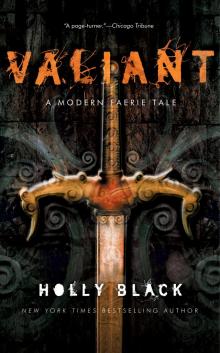 Valiant
Valiant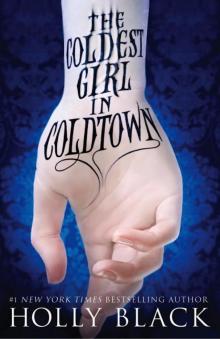 The Coldest Girl in Coldtown
The Coldest Girl in Coldtown The Darkest Part of the Forest
The Darkest Part of the Forest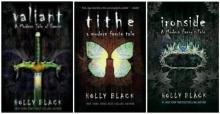 Tithe
Tithe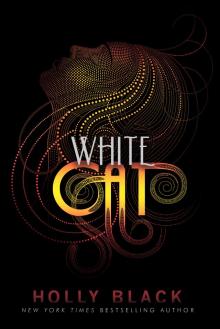 White Cat
White Cat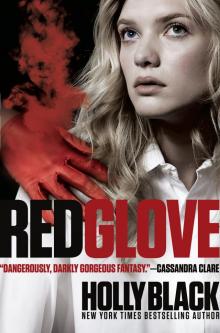 Red Glove
Red Glove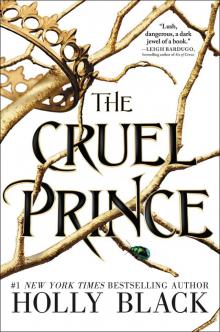 The Cruel Prince
The Cruel Prince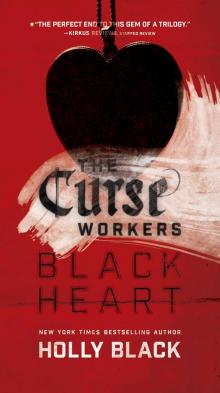 Black Heart
Black Heart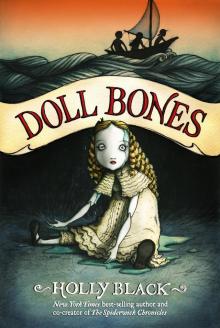 Doll Bones
Doll Bones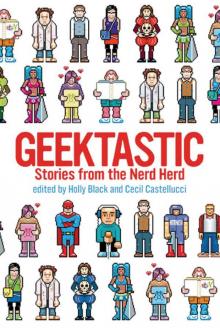 Geektastic: Stories from the Nerd Herd
Geektastic: Stories from the Nerd Herd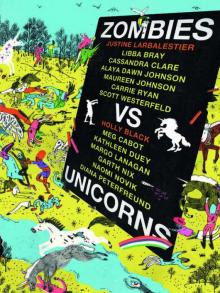 Zombies Vs. Unicorns
Zombies Vs. Unicorns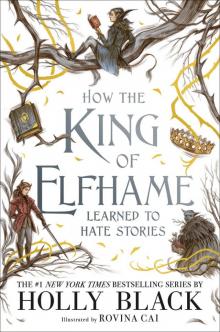 How the King of Elfhame Learned to Hate Stories
How the King of Elfhame Learned to Hate Stories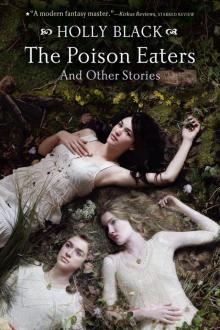 The Poison Eaters and Other Stories
The Poison Eaters and Other Stories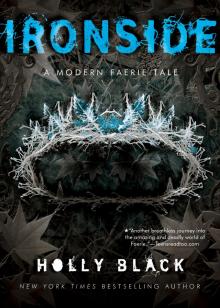 Ironside
Ironside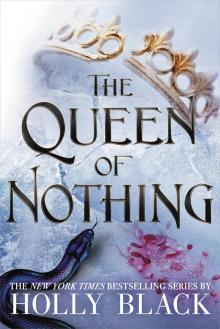 The Queen of Nothing
The Queen of Nothing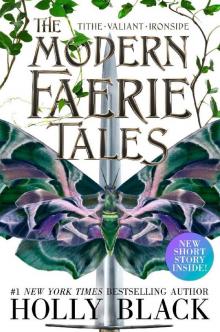 Modern Faerie Tales
Modern Faerie Tales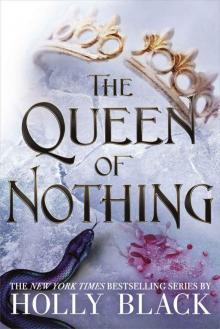 The Queen of Nothing (The Folk of the Air #3)
The Queen of Nothing (The Folk of the Air #3)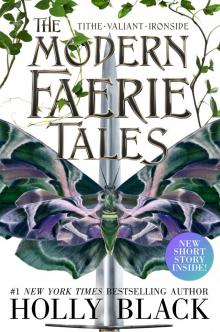 The Modern Faerie Tales
The Modern Faerie Tales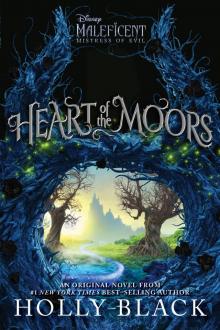 Heart of the Moors
Heart of the Moors The Golden Tower
The Golden Tower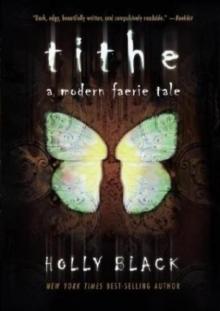 Tithe mtof-1
Tithe mtof-1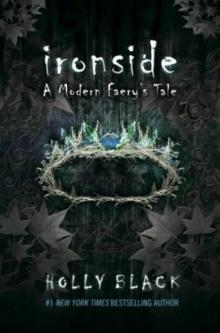 Ironside mtof-3
Ironside mtof-3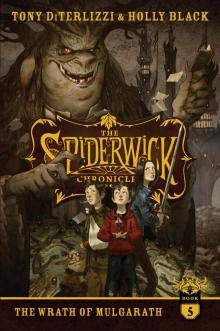 The Wrath of Mulgarath
The Wrath of Mulgarath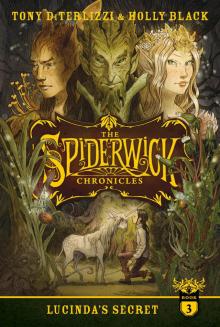 Lucinda's Secret
Lucinda's Secret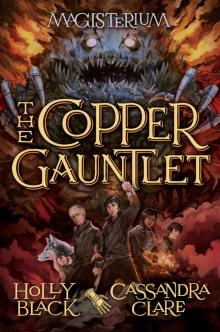 The Copper Gauntlet
The Copper Gauntlet The Field Guide
The Field Guide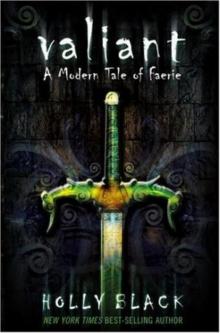 Valiant mtof-2
Valiant mtof-2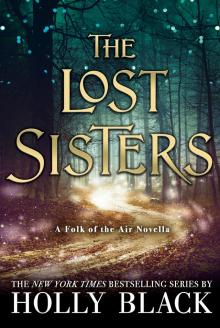 The Lost Sisters
The Lost Sisters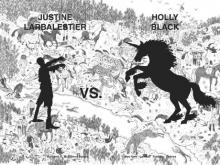 Zombies vs. Unicorns
Zombies vs. Unicorns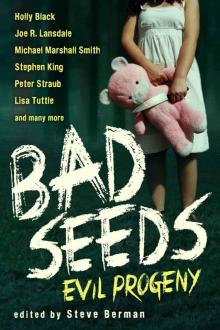 Bad Seeds: Evil Progeny
Bad Seeds: Evil Progeny Red Glove (2)
Red Glove (2)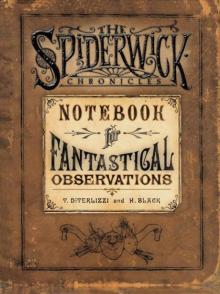 Notebook for Fantastical Observations
Notebook for Fantastical Observations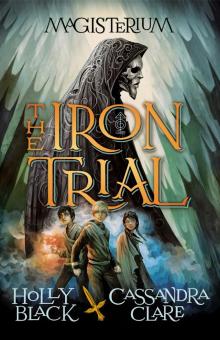 The Iron Trial
The Iron Trial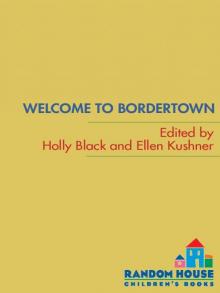 Welcome to Bordertown
Welcome to Bordertown